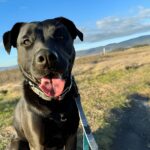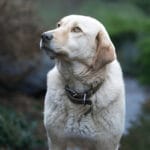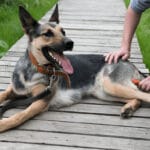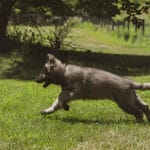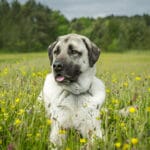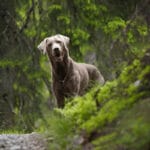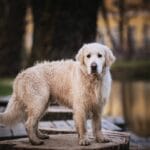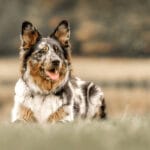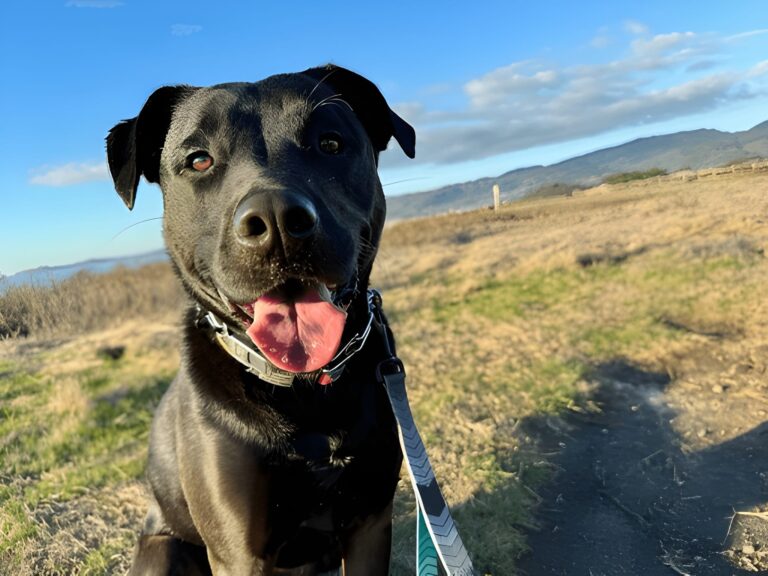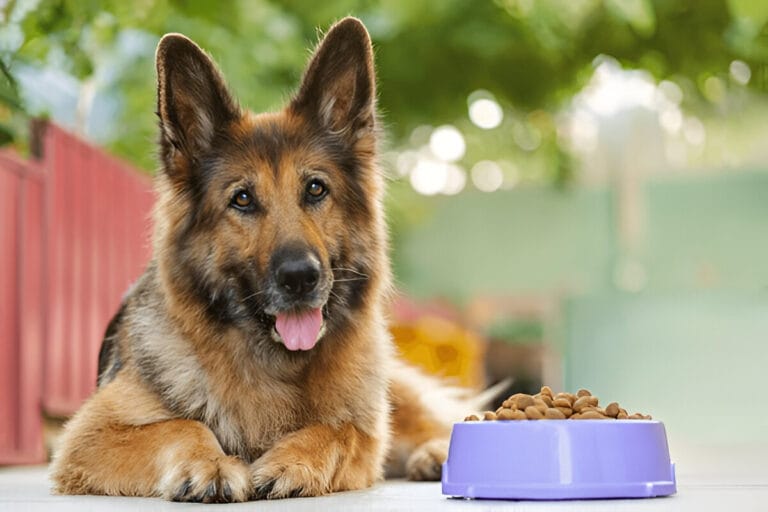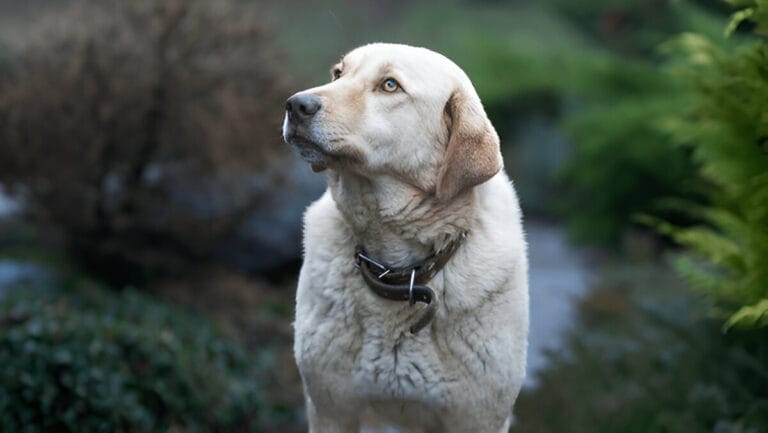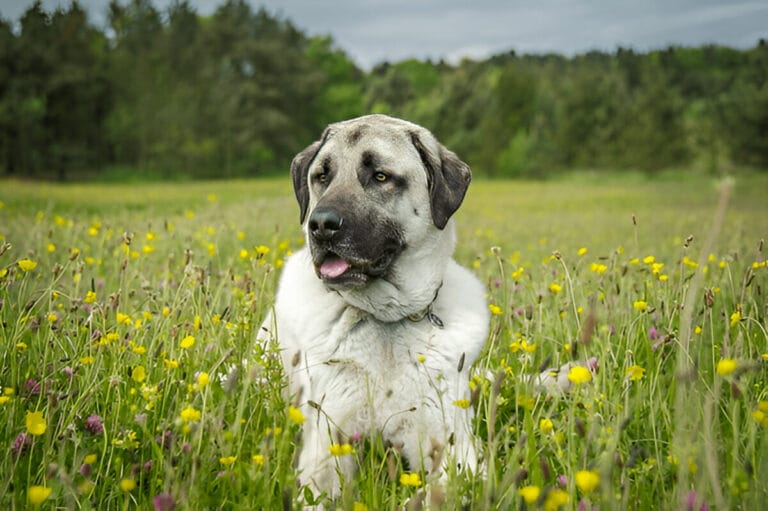Anatolian Shepherd
The Anatolian shepherd stands as one of the earliest examples of livestock guardian dogs, a magnificent breed type that hails from the rugged countryside of Turkey. These large, muscular dogs were bred for centuries to protect flocks of sheep, goats, and cattle on their own, using their big bodies and loud barks to deter predators from threatening the herds.
Closely related to the Turkish Kangal, these descendants of regional guardians were brought to the United States in the late 1960s, where many discovered their remarkable natural ability to herd and protect animals with minimal human intervention.
What strikes me most about this LGD breed is their innate understanding of their role – I’ve witnessed these calm dogs transform from gentle giants to fierce protectors the moment they sense a threat to their charges.
Although primarily working dogs, the Anatolian shepherd can also make a great family pet for the right individuals, provided they receive optimal conditions and understand the breed’s unique needs. These independent dogs possess strong protective instincts and need plenty of socialization in their early lives to develop into well-rounded companions.
With their impressive size – up to 150 pounds – and tendency toward barking, they have significant space requirements and are better suited for rural life rather than urban settings.
In this article, you’ll learn more about everything you need to know regarding their physical characteristics, temperament, training, care needs, and rich history – so read on to find out what makes this ancient guardian such a good companion for those who can meet their specialized requirements.
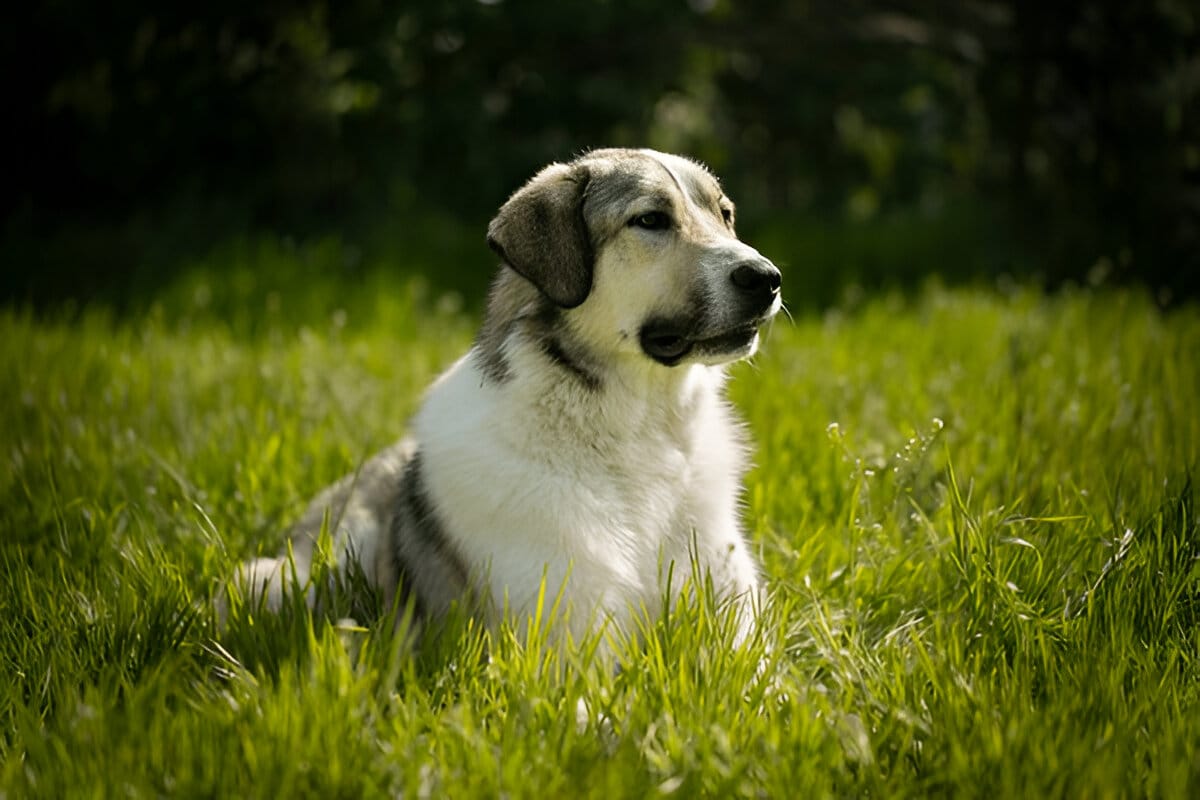
Photo credit: Shutterstock by Liza de Bie
Breed Overview
This impressive Working GROUP member from Turkey showcases remarkable consistency in TEMPERAMENT – Loyal, alert, and protective by nature, making them exceptional guardians for those who understand their needs.
Males typically reach 29 inches in HEIGHT while females stand around 27 inches, with WEIGHT ranging from 80 to 120 pounds for smaller individuals and 110 to 150 pounds for larger specimens, creating a substantial presence that commands respect.
Their Short, smooth COAT comes in various stunning COLOR combinations including Blue, fawn, brindle, liver, red, white, biscuit, and gray, often enhanced by distinctive markings and masks that give each dog a unique appearance I find absolutely captivating in my years working with this breed.
With a LIFE SPAN of 11 to 13 years, these magnificent dogs offer over a decade of devoted companionship, though potential owners should note they are Not HYPOALLERGENIC, making them unsuitable for those with severe allergies to dog dander.
History of the Anatolian Shepherd
The story of the Anatolian Shepherd begins in Anatolia, the Asia Minor peninsula that constitutes the Asian portion of Turkey, a region that served as the crossroads of early civilization. Here, sheep and goat herders developed what became known as the Coban Kopegi (the shepherd’s dog), the forerunner of today’s Anatolian Shepherd we know and love.
This central region of high plateau, endless plains, and rolling hills experiences summers that are dry and brutally hot, while winters bring snowy, sub-zero temperatures – a harsh, unforgiving crucible that forged the breed’s longstanding reputation as the supreme flock guardian.
Ancient artifacts going back to the days of the Babylonian Empire document the breed’s ancestors, with Assyrian bas-relief carvings housed in the British Museum and dating to 2000 b.c. that depict large dogs of recognizable type.
Even the earliest books of the Bible refer to shepherds with dogs whose appearance was most likely some local variation of these guardian breeds. Having studied these historical depictions myself, I’m always amazed by how little the essential form and function of these dogs has changed over millennia.
The breed’s history in America begins in the years immediately preceding World War II, when the Department of Agriculture imported a breeding pair to participate in a top-secret Sheepdog Project. The program’s objective was to determine which breeds would be best suited for work on American pastures, but with the outbreak of war, the project was disbanded and the Anatolians and their offspring were dispersed to ranchers.
Breeding activity began in earnest during the postwar 1950s, but the breed really took hold in this country during the 1970s. Credit for firmly establishing the breed goes to Lieutenant Robert Ballard of the U.S. Navy, who acquired a pair while stationed in Turkey and brought them home, where he bred the first littler in 1970, providing foundation stock for American breeders.
This new activity coincided with the passage of the Endangered Species Act, a law that required control of population and predatory wolves without killing them.
These guardian dogs, who would rather intimidate predators than fight, were perfectly suited for the job. Many are still working on ranch operations today, protecting everything from sheep and goats to ostriches and llamas. The shepherd breed has roots that stretch back centuries – they hail from the region also referred to as Kangal, where dogs were thought to have been bred specifically to protect livestock for over 3 millennia, making them perfect for this task.
These dogs were imposing enough to scare away predators, yet quick and strong enough to survive any animal attack. They lived on a ton of minimal food and their thick fur and robust build made them hearty enough to withstand the bitterly cold nights while they looked after their flocks. Around the world to this day, these remarkable guardians continue their ancient work.
The dogs that arrived in the United States were part of a secret government program meant to find the ideal livestock guardian, and researchers considered them among the top 4 candidates. The American Kennel Club was evaluating the breed when war broke out and the program was abandoned, but the dogs made their way into private hands and were finally recognized by the AKC in 1996.
As the name implies, this is a breed from the modern-day Republic of Türkiye, more specifically the Kangal district of Sivas province – hence why some call them Turkish guardians.
The exact origins remain unknown, though there are artifacts depicting similar dogs from 668 BCE, which gives us an idea of when these dogs may have been first utilized. Experts date their use at least 6,000 years back, and they were brought to America in the late 1960s by these dedicated enthusiasts.
The two foundation dogs, Zorba and Peki, represented bloodlines about which Americans knew very little, and the individual varieties of traditional Turkish dogs used during breed development – such as the Karabash, Aksaray, and Malaklisi – resulted in dogs having varying qualities.
Nonetheless, they were almost identical in purpose and temperament due to their shared heritage, yet it took time to gain proper recognition as a distinct breed with its own set of standards when the American Dog breeders association was formed and later accepted by the AKC.
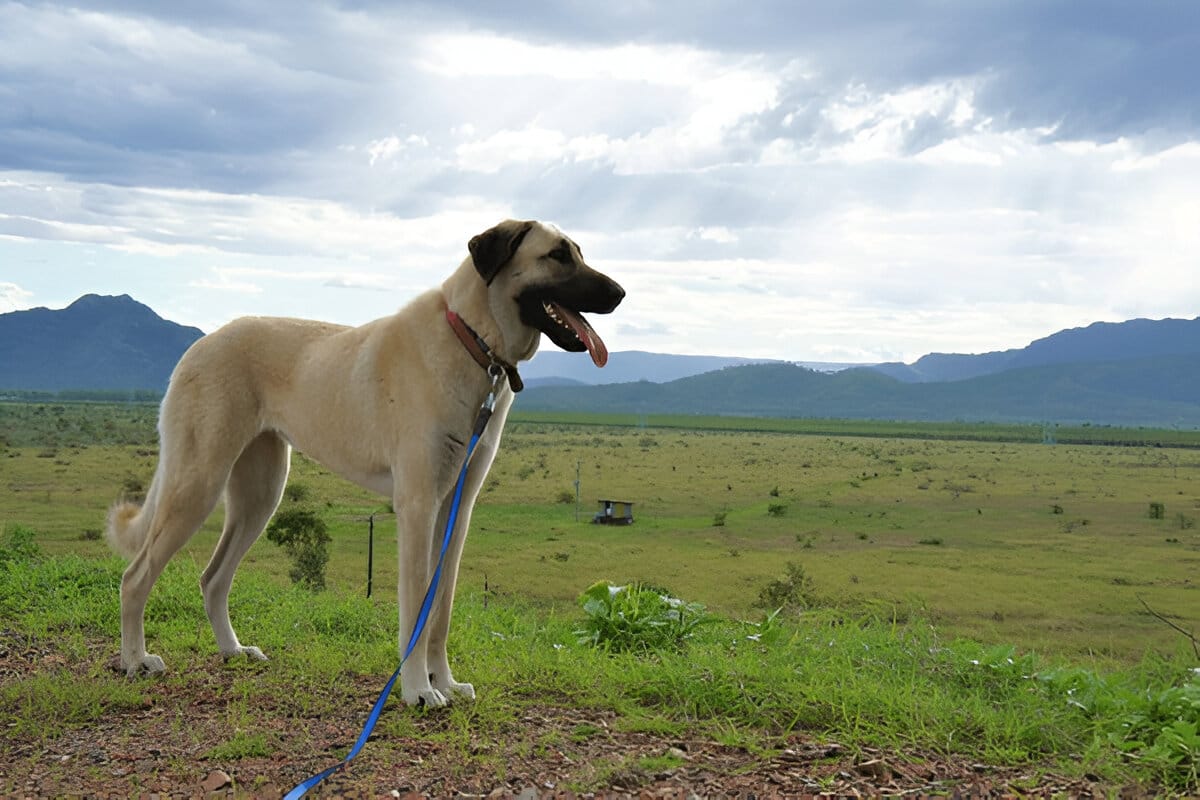
Photo credit: Shutterstock by LyndenLeaves
What Is an Anatolian Shepherd’s Temperament?
The Anatolian shepherd’s temperament reflects centuries of breeding as a livestock guardian dog breed, and there are few things you should expect from these remarkable canines that set them apart from typical family pets.
They may seem calm and laid-back initially, but shepherds are always on the lookout for potential dangers, maintaining a constant state of quiet vigilance that I’ve observed countless times during my work with this breed. These dogs are naturally independent thinkers who want nothing more than to keep their flock and territory safe, and due to these instinctive qualities, they require plenty of early socialization to prevent behavioral issues in adulthood.
They pair best with experienced owners who know what they’re doing, otherwise their imposing size can make them quickly get out of control and cause destruction in any environment where boundaries aren’t clearly established.
When socialized properly, these magnificent dogs make great pets for families with a spacious, fenced yard where the shepherd can roam around, exercise, and have something to call their own – which will naturally become their purpose to protect.
While the above covers some must-knows about their character, there’s more to their complex personality – the traits below you’ll find include additional points that reveal why these dogs require such thoughtful handling and why they’ve earned their reputation as one of the most effective guardian breeds in the world.
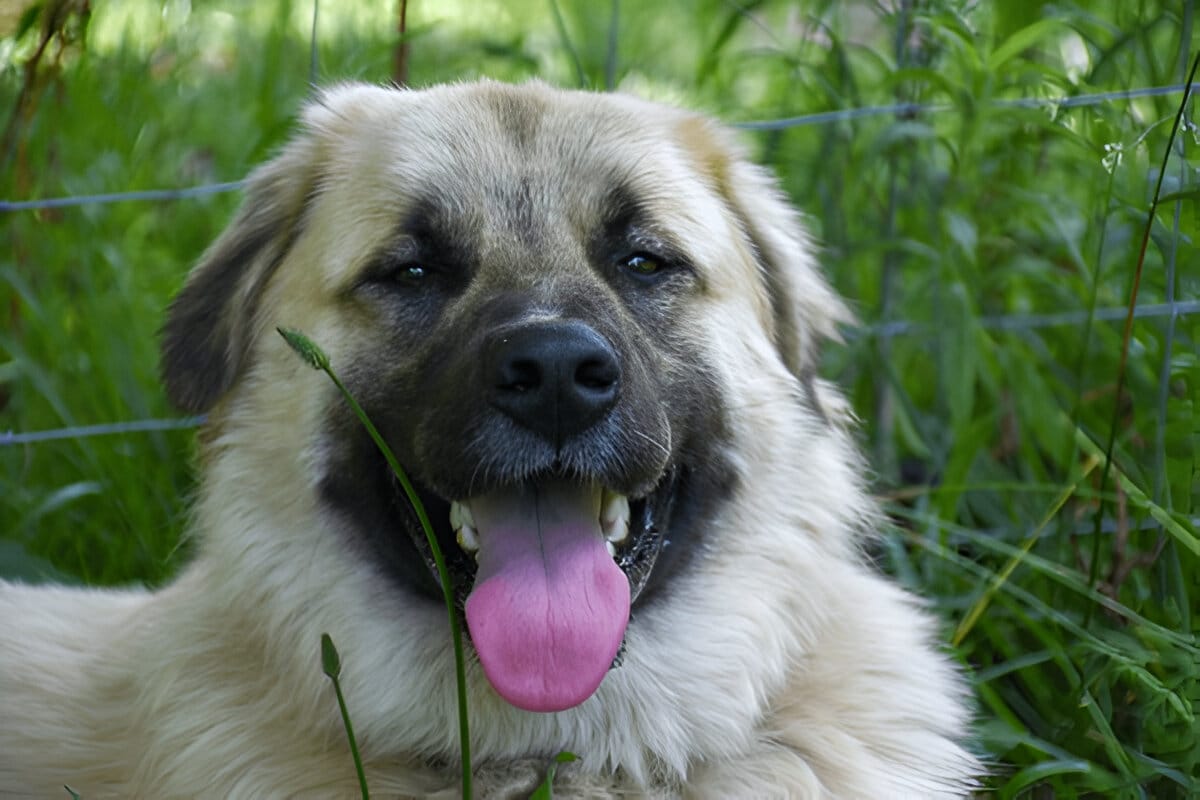
Photo credit: Shutterstock by SusImage
Characteristics of the Anatolian Shepherd
The Anatolian shepherd generally has an independent and watchful temperament that reflects their centuries-old role as livestock guardians, and these dogs don’t display overly affectionate personalities or aren’t particularly cuddly companions in the traditional sense.
But they are incredibly loyal to their families, with some even expressing possessive behavior that can be both endearing and challenging to manage. They can be wary of strangers, which is why socializing your puppy is of utmost importance from day one – I’ve seen too many owners struggle with unsocialized adults who become overly protective.
These dogs are notably prone to barking, especially if they detect any threat, and as the American Kennel Club notes, that’s standard procedure when they’re protecting flocks from predators – but for a big dog like this, those woofs are awfully loud and can create neighborhood tensions.
Based on Breed Facts at a Glance from the Dog Club of America, you can expect specific trait levels that help paint a complete picture of this remarkable breed. Their Affection Level rates as Low compared to typical family dogs, while their Friendliness toward strangers and Kid-Friendly nature both score Medium – meaning they can work well with children but need proper introduction and supervision.
Pet-Friendly interactions also rate Medium, indicating they can coexist with other animals when properly socialized, though their guardian instincts may create challenges. Their Exercise Needs are substantial, Playfulness tends toward the lower end, and their Energy level requires daily outlets for physical and mental stimulation.
Trainability can be challenging due to their independent nature, though their Intelligence is exceptionally high – they simply prefer to think for themselves rather than blindly follow commands. The Tendency to Bark rates very high, and the Amount of Shedding is considerable, requiring regular grooming maintenance that many new owners underestimate.
Anatolian Shepherd Care
Proper training and socialization are essential to ensure you have a well-adjusted Anatolian shepherd, as I’ve learned through years of working with this independent breed that can become problematic without early guidance.
While this breed doesn’t require an excessive amount of exercise compared to high-energy working dogs, they’ll need plenty of space to roam and patrol their territory – confining them to small yards or apartments goes against their fundamental nature and leads to destructive behaviors.
Thankfully, their grooming needs are straightforward and limited, requiring only regular brushing during shedding seasons and basic maintenance like nail trimming and ear cleaning, making them relatively low-maintenance in this aspect despite their substantial size and double coat.
Exercise
The Anatolian shepherd is an active and energetic dog that requires thoughtful exercise planning, so aim to give this breed at least one hour of exercise per day via long walks, jogging, interactive games, fetch sessions, agility training, sports activities, swimming, and challenging puzzle toys to keep their minds engaged.
Shepherds can show destructive behaviors such as digging holes or ripping through drywall if they aren’t given enough mental and physical stimulation – I’ve witnessed firsthand the damage a bored Anatolian can inflict on a home.
While they don’t need a ton of high-intensity action like some breeds, they absolutely do need space since the breed was developed to roam the countryside unsupervised and doesn’t adapt very well to living in small spaces or apartment settings.
This breed requires substantial room and ideally should have access to a securely fenced yard where they can be able to stretch their legs and patrol their territory, but note that the fence must be high and solid so these protective guardians can’t interact with unfamiliar people or dogs they don’t know.
Health
The Anatolian is overall a healthy and hardy breed with fewer genetic problems than many large dogs, though hip dysplasia is not entirely common in Anatolians and bloat – a life-threatening twisting and inversion of the stomach – remains a concern that owners should know the symptoms of, however, so as to act quickly if it does occur.
These dogs can be particularly sensitive to anesthesia, so ensure that their vet is aware of this breed-specific trait before any surgical procedures are performed – I always stress this point to new owners after seeing complications arise from uninformed veterinary teams.
Good breeders will screen for entropion, a condition which causes eyelids to invert and can be surgically corrected if caught early, while routine care includes having an Anatolian’s ears checked regularly for signs of infection and the dog’s teeth brushed frequently to prevent dental disease that can affect their overall health and longevity.
- Grooming
The Anatolian shepherd’s thick coat is fairly low-maintenance compared to many double-coated breeds, and you’ll generally have to brush them weekly to remove loose fur, but expect much heavier shedding periods twice a year, often in the spring and fall when you’ll need to be more diligent to keep up with the hair volume.
Plan on giving them a bath roughly every month depending on how dirty your dog gets from outdoor activities, and check your dog’s nails on a monthly basis as well to see whether they need a trim.
Also aim to brush their teeth daily and clean ears at least weekly, taking time to look for wax buildup or any abnormalities that might indicate infection – having worked with this breed extensively, I’ve found that outdoor dogs are particularly prone to ear issues if not monitored regularly.
Since this breed was bred to work outdoors, he has an undercoat that protects him from harsh weather elements, and while some Anatolians have long outer guard hairs, most have coats that are quite short and manageable.
A quick brushing once a week will keep them looking good most of the time, but keep in mind though that when he sheds his undercoat during shedding season, he should be given a thorough brushing-out to remove all the dead hair using a short-bristle brush and possibly a metal comb for a few days until the worst passes.
Like all large breeds, the Anatolian’s nails should be trimmed regularly to prevent splitting and discomfort, especially since these active dogs spend considerable time patrolling their territory.
- Training
Training an Anatolian shepherd can be a bit of a challenge since these working dogs historically live isolated lives with their flocks, so many of them are slow to respond to human cues – in fact, do you have 10 hours per week to dedicate to training and socialization? Because that’s what you’ll need to ensure a well-adjusted companion through consistent effort from a young age.
Using positive reinforcement is absolutely important for success with this breed, and I always recommend owners enroll in a puppy class as soon as your puppy is current on their vaccinations to get them exposed to controlled social situations early.
Shepherds are instinctively wary of strangers and quite protective by nature, making it imperative to keep this natural instinct manageable through proper socialization – a dog of this breed that’s lacking proper social exposure often develop hostile tendencies toward both other pets and humans.
These dogs should never receive specialized protection or guard dog training, as those methods will exacerbate their natural tendency toward aggression because this breed already tends to be suspicious of others and must be carefully socialized through obedience work with experienced trainers.
Remember that this breed was bred to work independently and make decisions on his own to protect his flock from outsiders, so expecting instant compliance to commands goes against their genetic programming – under no circumstances should you attempt guard-dog training with an Anatolian, as their natural protective instincts are already more than sufficient.
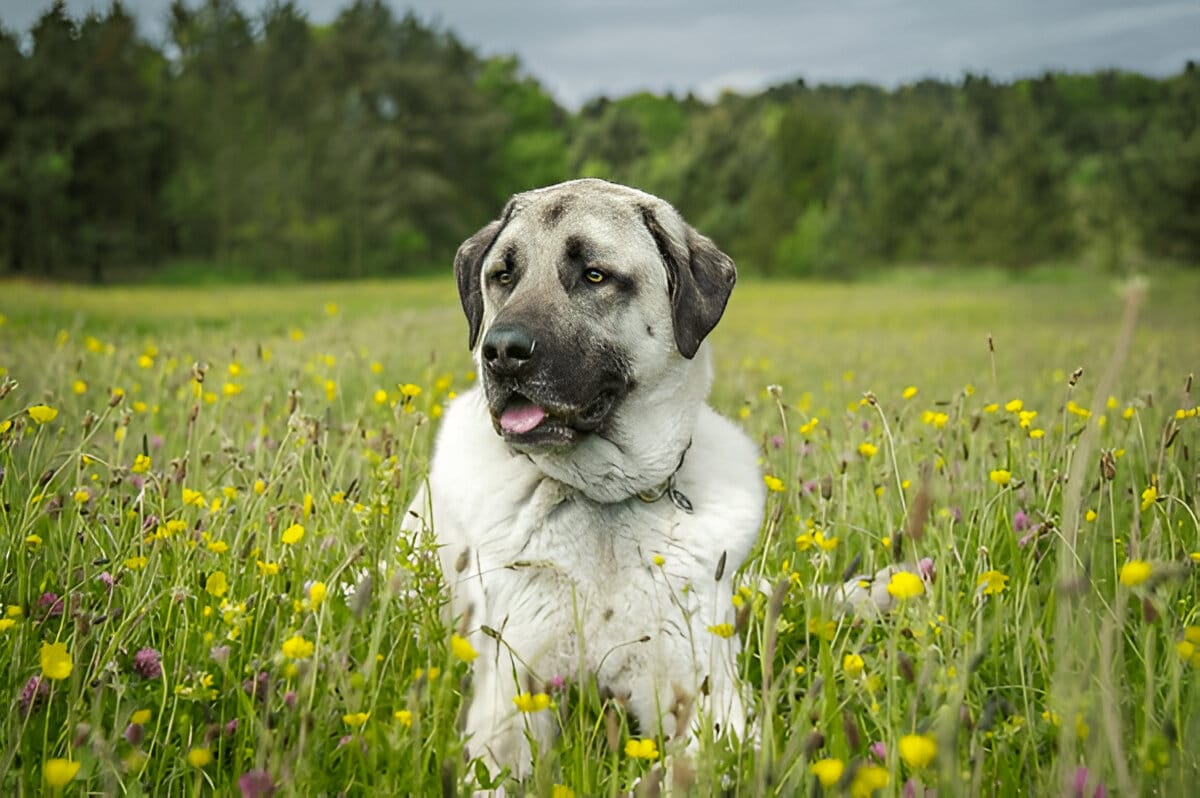
Photo credit: Shutterstock by rebeccaashworthearle
Common Health Problems
Overall, Anatolian Shepherds are typically robust dogs – indeed, although health concerns like hip dysplasia and gastric torsion frequently impact many other breeds, these conditions occur less commonly in Anatolian Shepherds. However, this breed still is prone to some hereditary health issues including certain conditions that owners should monitor.
Anesthesia sensitivity: This is not an issue unless your dog needs anesthesia for some kind of surgery – a reality that many Anatolian Shepherd owners may face during their companion’s lifetime. From my years of veterinary consultations with these breed specialists, I’ve learned that while Anesthesia sensitivity doesn’t typically plague this hardy breed like it does with sighthounds or other sensitive breeds, it’s still wise to discuss your dog’s breed-specific considerations with your veterinarian before any planned procedures.
Entropion: This causes the eyelids to roll inward, leading to the eyelashes rubbing on the cornea – a condition known as Entropion that can occasionally affect Anatolian Shepherds, though it’s thankfully not as common in this breed as in others with more pronounced facial features.
Diet and Nutrition
Make sure fresh water is always available for your dog and feed a high-quality, nutritionally balanced canine diet – it’s common to provide two measured meals per day, but you should discuss both the type of food and amount with your vet to make sure you’re meeting your dog’s individual needs.
Traditionally, Anatolian shepherds do well on lamb and rice formulations, as this breed of shepherds don’t tend to overeat like some other breeds, though it’s still important to monitor treats and other extra calories to prevent excess weight gain.
From my experience working with these magnificent guardians, I’ve found that whether using commercially manufactured or home-prepared meals under your veterinarian’s supervision and approval, any diet should be appropriate for their age – puppy, adult, or senior – and not just focused on can serving as an aid in training.
Giving too many treats can cause obesity in these powerful Shepherd Dog companions, so it’s crucial to learn about which human foods are safe for dogs and which are not – always check with your veterinarian if you have concerns about specific ingredients.
Keep clean, fresh water accessible at all times, and remember that while this hardy breed evolved to thrive on simple, natural foods in their native Turkish highlands, modern Anatolian guardians benefit from carefully balanced nutrition that supports their active lifestyle and impressive size throughout their working years.
Anatolian Shepherd Overview
These active canines need a lot of space and plenty of exercise and mental stimulation, along with proper training – the Anatolian shepherd can be the right dog for the right family, especially since this is a healthy breed with basic grooming needs.
Pros of Anatolian Shepherds
Loyal and protective by nature, these remarkable guardians offer limited grooming needs, remain generally healthy, and display a calm demeanor that makes them exceptional companions for the right family.
Cons of Anatolian Shepherds
Needs socialization and training which isn’t always easy due to their independent, stubborn nature, they’re not a fan of strangers, needs plenty of space, are large and perhaps too big for small children, and can be loud barkers.
Conclusion
The Anatolian Shepherd represents one of humanity’s oldest canine partnerships, tracing its protective lineage back through six millennia of Turkish pastoral traditions. These independent, protective dogs excel at livestock protection but challenge inexperienced owners. Weighing up to 150 pounds, they require space, early socialization, and owners who respect their working nature. While not suitable for urban living or casual pet ownership, they offer excellent health, minimal grooming needs, and unwavering loyalty. Many still work on modern ranches protecting various livestock. For experienced families with adequate space, the Anatolian Shepherd provides a remarkable connection to humanity’s oldest canine working partnerships.

